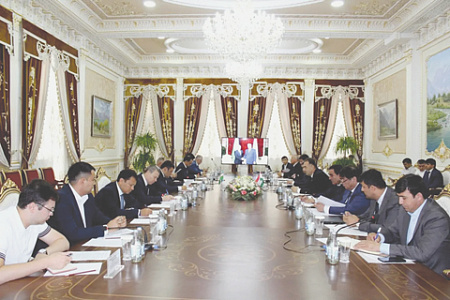Central Asia Eyes Soviet-Era Energy Grid Revival

In a significant move to bolster regional energy security, the energy ministers of Tajikistan and Uzbekistan have advanced discussions on expanding their cooperation, focusing on electricity trade for the upcoming 2025-2026 autumn-winter period. The high-level meeting between Tajikistan’s Daler Juma and Uzbekistan’s Jurabek Mirzamakhmudov also addressed the technical challenges of a much larger project: the revival of the Unified Energy System of Central Asia, a Soviet-era power-sharing network that once ensured regional stability.
The partnership aims to solve a chronic issue for Tajikistan. With a population exceeding 10 million, the country faces severe electricity shortages from October to April, as 98% of its power is generated by hydropower plants whose output dwindles in the cold, low-water season. The recent talks in Guliston, Tajikistan, brought together top energy experts from both nations to prepare for the coming winter and lay the groundwork for reconnection to a unified regional grid, highlighting the strategic importance of cooperation initiated by leaders Emomali Rahmon and Shavkat Mirziyoyev.
While Tajikistan grapples with deficits, neighboring Uzbekistan is rapidly emerging as a regional energy powerhouse. In the first five months of 2025, the country produced 35.5 billion kWh of electricity, a 4.2% increase year-on-year. More impressively, its electricity export revenue surged by 72.6% to $95.6 million. This success is fueled by aggressive modernization, diversification into gas and solar power, and a clear strategy to become a key energy exporter, transforming from a nation that once struggled with its own shortages.
At the heart of the region’s long-term energy future lies Tajikistan’s immense, largely untapped potential. The country is currently completing the monumental Rogun Hydroelectric Power Plant, with two of its six turbines now operational. A third is slated for completion by the end of 2025. According to its Ministry of Energy, Tajikistan currently utilizes only 5% of its vast hydropower resources. With ambitions to harness its massive solar and wind potential as well, the nation aims to transition entirely to green energy by 2032, potentially positioning itself as the primary clean energy supplier for all of Central Asia.
The proposed revival of the energy ring, which fell apart after the Soviet Union’s collapse due to political and pricing disputes, is seen as the key to unlocking this potential. The original system facilitated a symbiotic exchange: mountainous republics like Tajikistan and Kyrgyzstan supplied summer hydropower, while receiving gas and coal from their neighbors in winter. In 2025, Uzbekistan proposed resurrecting this grid, an initiative supported by Kazakhstan, Kyrgyzstan, and Tajikistan. The plan now includes the potential integration of Russia, a move that experts believe is crucial for closing the regional energy deficit.
Bringing this ambitious project to fruition requires significant investment and political will. According to Alexander Vorobyev of the Russian Academy of Sciences, the partners must first agree on modernizing transmission infrastructure, particularly in Kazakhstan, to handle energy flows from Russia. Despite the challenges, Russia’s participation is seen as a strategic move to secure a permanent role as a stable electricity supplier to Central Asia, creating a powerful, integrated energy partnership that could redefine the region’s economic and political landscape for decades to come.